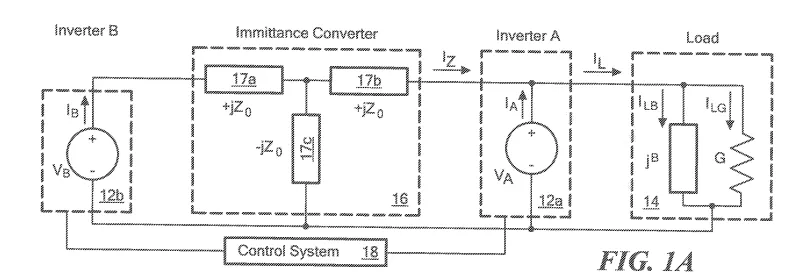High-Frequency Variable Load Inverter Architecture
High-frequency inverters are used in industrial plasma generators as well as in wireless power transfer which utilize signals having frequencies within industrial, scientific, and medical bandwidths.
Researchers
-
high-frequency variable load inverter and related techniques
United States of America | Granted | 10,536,093
Figures
Technology
The invented high-frequency inverter system enables HF power delivery directly into highly variable impedance loads with a relatively high efficiency. A pair of inverters are coupled and controlled such that each inverter is connected to a load with resistive and inductive characteristics. This configuration limits any parasitic inductances while realizing zero-voltage switching. The invented system includes a first inverter directly connected to the variable impedance load and a second inverter coupled to the load through an immittance converter. Control signals come from a coupled controller to the first and second inverters to yield capacitance in the second inverter and inductance in the first inverter. This maintains resistive and inductive loading of the constituent inverters for zero-voltage soft switching.
Problem Addressed
High-frequency (HF) power is usually coupled to a load that exhibits load impedances over a wide range. Inverter designs at HF generally use fundamental frequency inductive loading to achieve zero-voltage switching (ZVS) transitions, which are necessary to achieve high efficiency operation. Providing HF power to a load having a highly-variable load impedance makes it difficult to maintain desired inductive loading without requiring a large inductive circulating current, which can induce substantial loss. To address load impedance variations, some inverters are augmented with a tunable matching network (TMN) that dynamically matches the variable load impedance to the fixed value desired for the inverter. Though effective, the TMN itself is expensive, bulky, slow, and inefficient. Thus, efficient generation and delivery of power into variable load impedances is difficult, resulting in HF inverter systems that are bulky, expensive, and inefficient.
Advantages
- Delivers a specified output power while preserving desired inverter loading characteristics
- More efficient, faster and less expensive than a tunable matching network
Publications
Perreault, D. J. "A new architecture for high-frequency variable-load inverters." 2016 IEEE 17th Workshop on Control and Modeling for Power Electronics (COMPEL), Trondheim, Norway, 2016, pp. 1-8. doi: 10.1109/COMPEL.2016.7556684.
License this technology
Interested in this technology? Connect with our experienced licensing team to initiate the process.
Sign up for technology updates
Sign up now to receive the latest updates on cutting-edge technologies and innovations.
